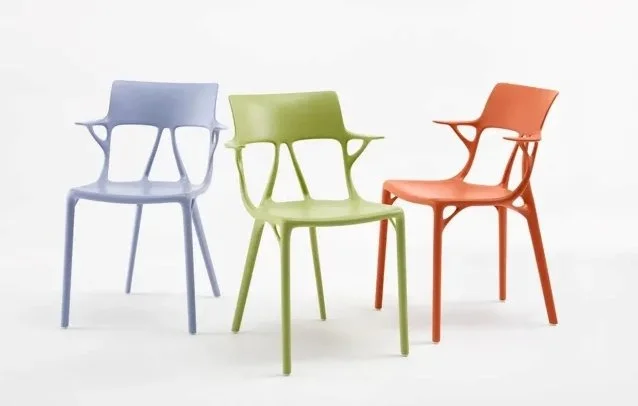Discover the hidden meaning behind common designs! Learn how skeuomorphs—like 10:10 clock settings and 'ancient' phone icons—use old forms to add familiarity, connection, and aesthetic value to modern products.
All in Design Philosophy
Design Principles Learned From Minecraft
Explore how Minecraft embodies key engineering design principles, including user-centered design, the creative power of constraints, and the importance of iteration and prototyping. Examine in-game experiences alongside real-world examples like the Apollo missions, and learn how players and engineers alike learn to innovate, adapt, and improve through design challenges.
Mapping Rick Rubin's "The Creative Act" to Engineering Design
Rick Rubin's philosophy from The Creative Act offers a mindful approach to engineering design, seeing awareness, listening, and constraint as keys to clarity in product development.
Wabi-sabi vs Kaizen
Learn about the Japanese philosophies of wabi-sabi and kaizen with Professor John Salmon. Discover how to apply wabi-sabi, which finds beauty in imperfection, and kaizen, which focuses on continuous improvement, to enhance your life and design projects.
Lessons Learned from Capstone: Tips For A Successful Product Design
BYU's Capstone Program reveals how thoughtful design transforms ideas into impactful realities. Learn 14 principles for product designers to create solutions that exceed expectations, from decoding customer needs and embracing systems thinking to iterating early, guarding against scope creep, and designing for manufacturability.
Dr. Paul MacCready and The Kremer Prize
Flight! People have wondered about it since the beginning of time. Paul MacCready was one of those people deeply interested in flight. What follows is a story of Paul MacCready, and what we can learn from him in the engineering design process.
Exercises to Build Design Strength
If you’re like me, you might find yourself yearning to be a better designer but not sure where to start! I’d like to share with you some mindsets and actionable exercises we can use to grow in our design strength.
A Plausible Future: The AI / Designer Partnership
Imagine a world where designers and AI work hand in hand, pushing creative boundaries and optimizing workflows. That future is already here. AI is not a replacement for human ingenuity—it’s a tool that amplifies it, and those who master it will shape the next era of design.
The Best Approximation of Pi
3? 3.14? 22/7? What is the best approximation of Pi? In this article, Dr. Chris Mattson explores this question and its implications to the world of design.
Women Who Changed History: Highlighting Influential Women Whose Contributions Have Been Underappreciated
Women have driven groundbreaking advancements in engineering, from Stephanie Kwolek’s Kevlar to Ada Lovelace’s early programming concepts and Mary Jackson’s contributions to aerospace. This article celebrates their achievements and highlights the importance of diversity in STEM innovation.
The Doofenshmirtz Design Dilemma: Lessons in Engineering from Danville's Most Persistent Inventor
Author Adam Rose explores two design lessons we can learn from the most prolific inventor in pop culture. From -Inator to -Inator, Dr. Doofenshmirtz showed us that engineering can solve problems and tell compelling stories.
Engineering Versus Design
Engineering and Design are two very similar designs when it comes to product creation. Andrew Cousins explores the division between the two fields and offers some ideas on how to be a more well-rounded problem solver.
Product Development Lessons from the NES Controller
The Nintendo Entertainment System (NES) Controller is an icon of the 1980’s and a symbol of the video gaming industry. This article describes the history of Nintendo as it relates to the NES and derives general product development lessons from the design of the NES Controller.
Crafting iconic products: The Power of a Branded approach in Product Design
In product design, UX gets a lot of attention—and for good reason. Making products that are intuitive, efficient, and user-friendly is crucial. But there’s one more thing that can contribute significantly to designing exceptional products and ignoring it means missing out on creating products that are truly iconic. Let’s talk branding.
Minimalism in Design– Understanding Your Scope
The relationship between scope and minimalism doesn’t hold true in every case, but if you observe brands, you will definitely notice a pattern: the minimalism in their logos and their products frequently corresponds to their scope.
This Concept Changed the Way I Think About Ideation
This article presents an idea that has high influenced my way of thinking about design. The article is centered on ideation and focuses primarily on how to do it well. It introduces the concept of design space, design exploration, and the trade off curve.
Why Study the Design Process?
Why would you undertake a deep study of engineering design, or the design process, when you could go about design on your own and learn from your own experience? There is value to be gained from studying design, and I want to add my own take on why studying design is an important complement to hands-on experience.
Engineering with an Impact
Making a lasting change is my biggest goal in life, and I hope to share in this article the things that I have learned about how to be an engineer with impact. In voicing what has helped me to be more impactful in my undergraduate career up to this point, I hope you can gain more insight into what you can do from day to day to do the same.
Inversion: The Power of Thinking Backwards
The idea of solving a maze backwards is an example of what I consider the most powerful thinking technique out there: inversion. Inversion means flipping the problem on its head; you look at the opposite of the problem you actually want to solve, and then you use the insights you gain to help answer the original question.
Cushions, Keyboards, and a Customized MRI - Lessons in Human Centered Design
You, as the designer, want people to like your work. Especially if you have already done the work. And especially if you have reason to believe your idea is what’s best. But familiarity and comfort remain, for better or for worse, critical considerations in product design.



















